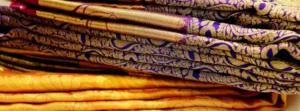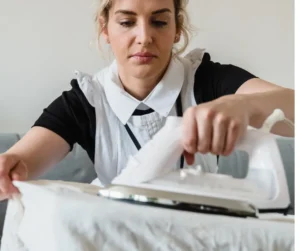Silk sarees are a symbol of elegance, and maintaining their vibrant color and luxurious texture requires proper care. One of the most common questions about silk sarees is whether dry cleaning can affect their color. While dry cleaning is generally safe for silk, there are a few considerations to keep in mind to ensure your saree remains as beautiful as ever. Here’s what you need to know, along with three expert tips for preserving its vibrancy.

Does Dry Cleaning Affect Silk Saree Color?
Dry cleaning is a preferred method for cleaning silk sarees as it is gentle on the fabric, prevents shrinking, and avoids the damage that water-based washing might cause. However, over time, Silk saree dry cleaning can result in some color fading. This is particularly true for sarees with delicate or deep colors, intricate hand-painted designs, or rich dyes. Dry cleaning solvents, although mild, can gradually strip the fabric of some of its color if done excessively.
3 Tips for Preserving the Vibrancy of Your Silk Saree
Limit Dry Cleaning Frequency
Excessive dry cleaning can lead to gradual fading of the saree’s color. It’s best to dry clean your silk saree only when necessary. For instance, after a major event or when the saree shows visible stains. If the saree hasn’t been heavily worn, it can often be refreshed by steaming or airing it out, reducing the need for frequent dry cleaning.
Choose a Reputable Dry Cleaner
Not all dry cleaners are equipped to handle delicate fabrics like silk. It’s essential to find a dry cleaner experienced in treating silk sarees to ensure that the cleaning process is done carefully. A reputable cleaner will use special solvents and methods that are gentle on colors and preserve the texture of the fabric.
Store Silk Sarees Properly
When not in use, proper storage is key to maintaining the color of your silk saree. Keep it in a cool, dry location, shielded from direct sunlight, as extended exposure to light can cause the colors to lose their vibrancy. Use a breathable cotton bag for storage to avoid any exposure to dust or moisture that might damage the fabric.
Conclusion
Dry cleaning is a safe and effective way to clean silk sarees, but it’s important to do so with care to prevent any potential damage to the color. By limiting the frequency of dry cleaning, choosing a professional cleaner, and storing your saree properly, you can preserve its vibrancy for years to come. Treat your silk saree with the attention it deserves, and it will continue to shine on every occasion!
Want expert care for your silk saree? Contact us today to get your saree professionally cleaned and preserved, ensuring its beauty lasts for generations!




